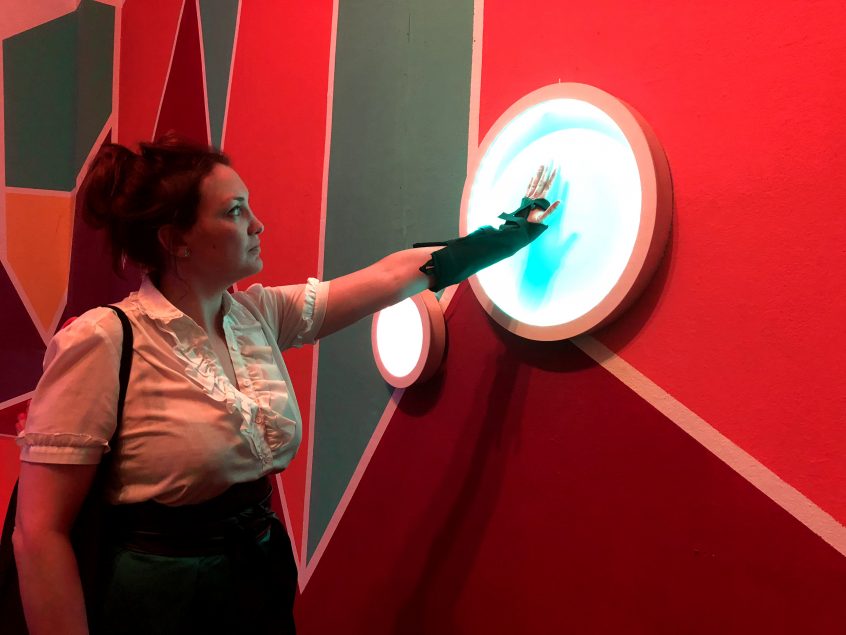The annual graduation shows at art schools are an excellent occasion to discover new talent. This year we checked out a new generation of graduate talents at the academies of Amsterdam, Den Haag, Rotterdam and Utrecht. We were elated to see so much talent this year! In this blog we share our favorite finds.
Not all art disciplines fit the objectives of Arttenders. That does not mean the artists don’t have potential to develop themselves and become suitable for how we work. An artists’ signature tells us a lot about how they can create a wider variety of work. Below we share 12 graduate talents who made the strongest first impression.
1. Rosa Maria van den Hove | HKU | Fine Art

Photo credit: Arttenders
This work is well executed, and in combination with a good use of color this immediately caught our attention. Whatever your association with the forms, the objects are appealing. You can’t help yourself – you really want to touch them! The soapstone, almost coral-like organic forms give the objects a spatial dimension. We could see Rosa Maria van den Hove’s work as interior interventions or in the shape of seating elements.
2. Jorn van Stein | Hidden Potential | HKU
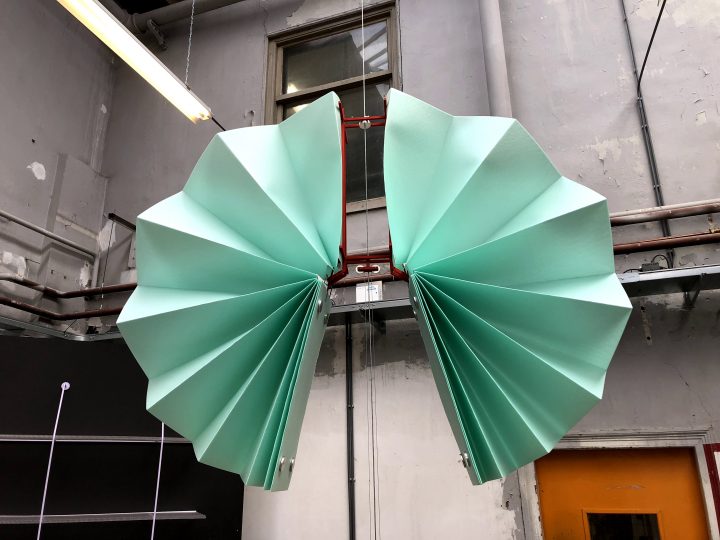
Photo credit: Arttenders
In his graduation project Hidden Potential Jorn van Stein uses materials that are usually, you guessed it, hidden. By bringing the materials to the surface he places them in a different context. The hanging kinetic origami called Unfold is made of subfloor. Jorn questions why laminate flooring is meant for on top while the subfloor is just as precious. Jorn van Stein wants to show us the hidden beauty and potential of construction materials and elevates the ordinary to something quite special. We are curious to see more!
3. Koos Buster | Ceramics | Rietveld Academie
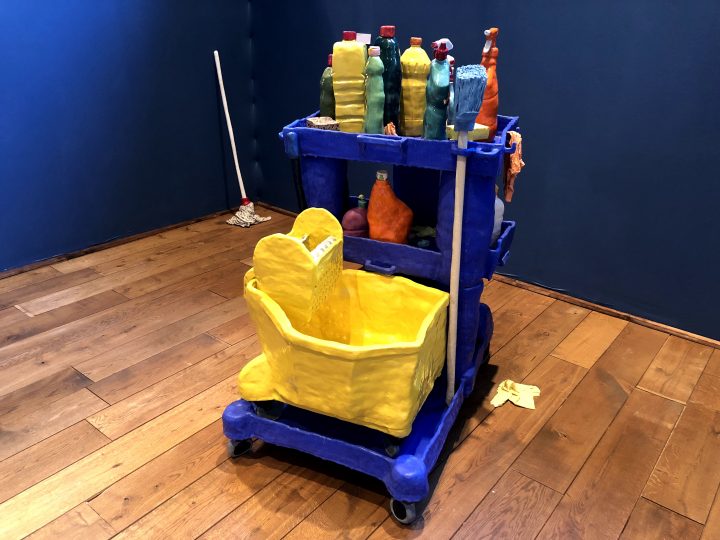
Photo credit: Arttenders
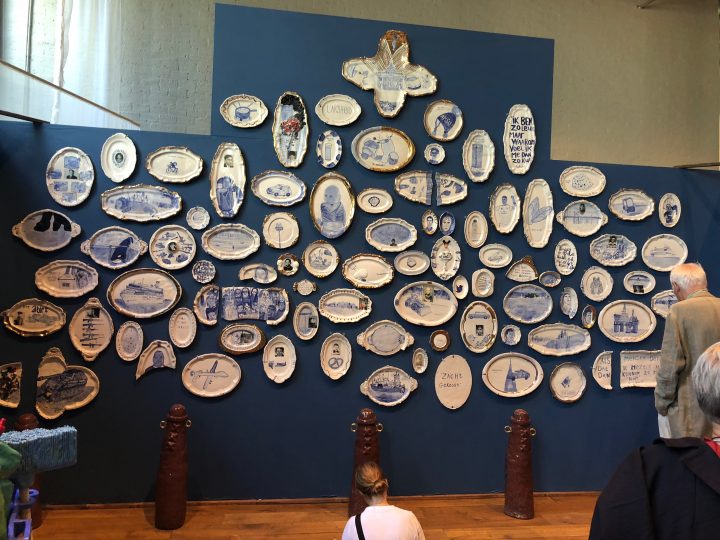
Photo credit: Arttenders
The work of Koos Buster stands out to us! Busters collection of ceramics is full of humor and shows excellent craftsmanship, which he clearly learned from his teacher (and our dear friend) Dutch artist Hans van Bentem. His objects display a colorful signature that is simultaneously rough, playful and sophisticated. Koos Buster is a maximalist with a fascination for the masters of the Golden Age: for the set-up of his graduation show he created a small museum of his works. The walls were covered with ceramic plates with hilarious quotes. We feel his work was well presented and it also made us greedy to have pieces of our own. Koos created awesome merchandise and we could not leave without buying some ceramic cigarette butts.
4. Judith Roux | On The Way | Gerrit Rietveld Academie
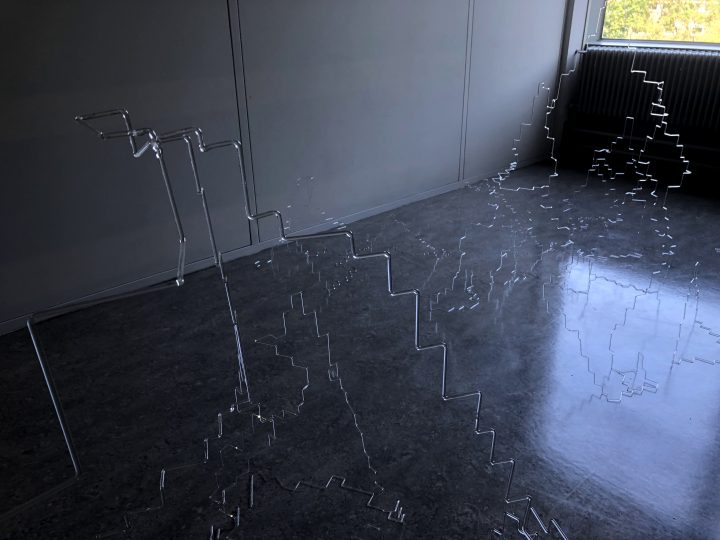
Photo credit: Arttenders
To see what Judith’s work is made of you consciously have to stop and take a long, hard look.
The installation is made of glass, is very delicate and makes the viewer acutely aware of their position in the room and the fragility of the object. The laborious structure of the installation shows true craftsmanship! We highly appreciate it when artists take their technique to a new level. However, the concept or idea behind the work was not very clear as far as we could tell. We are very curious to see further development of Judith Roux as an artist and we would be interested to see her work in combination with light and the addition of color.
5. Lotte van Eijk | Me For Me | Photography | WDKA

Photo credit: Arttenders
The photographs of Lotte van Eijk show a vulnerable and romantic series of her own body. We love the tasty, peachy intimate imagery and the one where a mandarin covers her freshly shaved private parts is our favorite. We look at the proud owner of a real-life voluptuous Rubens body with lush round shapes. The photos read very glossy, but they also have a voyeuristic and a slight perverse edge. The images are unsparing, yet eye-catching. However, the presentation could be better, it was a shame you could see the lines of the walls through the prints.
6. Chiara Veenstra | KABK | Interactive Media Design
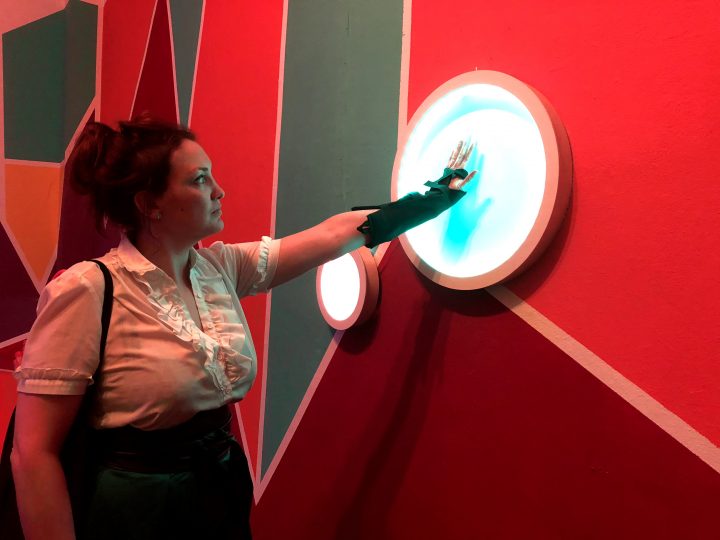
Photo credit: Arttenders
Project HUE lets the viewer perceive color through rhythmic vibrations. Chiara Veenstra explores the boundaries between the biological senses and the way technology influences our perception. The work is a combination of paint and advanced technology. It is not only a visual spectacle, but also based on a very layered concept. This is a combination of art and high tech in an excellent way! It makes color palpable by means of an arm accessory that gives a pulsing unique rhythm with every different color. The artist creates a mindfuck as you cannot trust your vision and therefore you are dependent on your sense of touch. It is a bold design with a lot of contrast. An immersive experience, just how we like it.
7. Sarah Anne Rootert | KABK | Interior architecture and Furniture Design
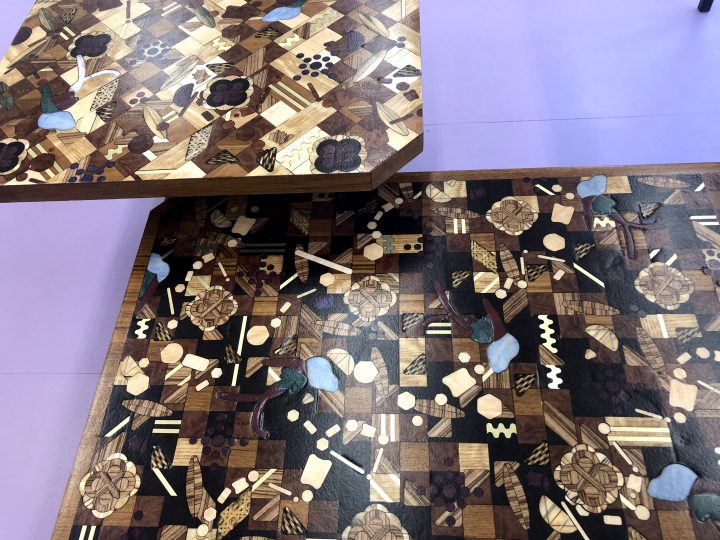
Photo credit: Arttenders
Sarah Anne Rootert explores different aspects of the Moluccan culture in her project Amboina. With the use of modern technologies, she re-establishes marquetry: inlaid work made from small pieces of coloured wood or other materials, used for the decoration of furniture. Rootert explores the visual effects of adding two-dimensional lines, forms, surfaces and colours into a complex composition and exiting patterns. We were impressed by the detailed craftsmanship, which provided a beautiful contemporary result. The possibilities are probably unlimited with these new techniques: we could see a whole ballroom floor covered with this, although that might be a time-consuming project.
8. Joana Schneider | KABK | Textile Design
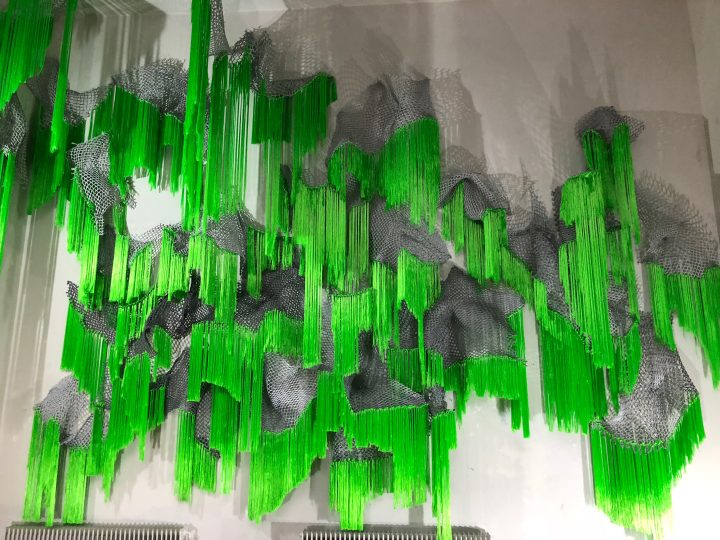
Photo credit: Arttenders
For her monumental installation PLUIS Joana Schneider used recycled fishing nets. The work is very decorative and has a luxurious look. Besides that it is layered by a story that refers to the circular economy. The work is beautifully executed but also communicates a serious statement about the great polluters of the ocean. Netmakers use non biodegradable material to maintain the fishing industry, so the remains of the fishnets washes up on beaches everywhere. This allows Joana to continue to work with the craft of these nets and to further experiment with the concept of reuse. We found this project very inspiring and our heads are overflowing with possibilities for implementation.
9. Pim Kerssemakers | Interactive Media Design | KABK
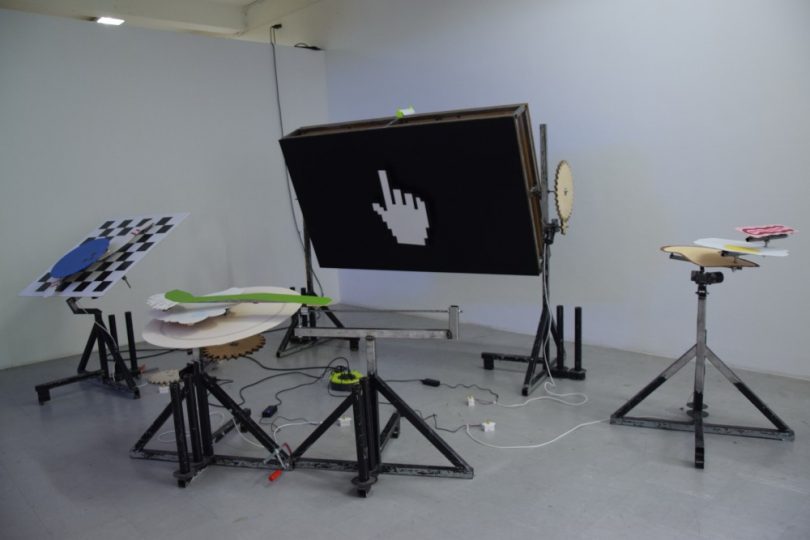
Photo credit: n/a
The Ludens Show consists of large colorful machines that represent everyday activities in a humorous way. They playfully refer to the expectation that technology will take over more and more human duties. We define these machines as kinetic absurdism. The presentation is a visual spectacle of two-dimensional moving objects. The work is clear in use of color and form. There is no time for the viewer to relax, because everything wobbles, rumbles and turns around. We are excited to see more of his work, perhaps in the form of applied art interventions such as interiors.
10. Jur de Vries – HKU – Fine Art
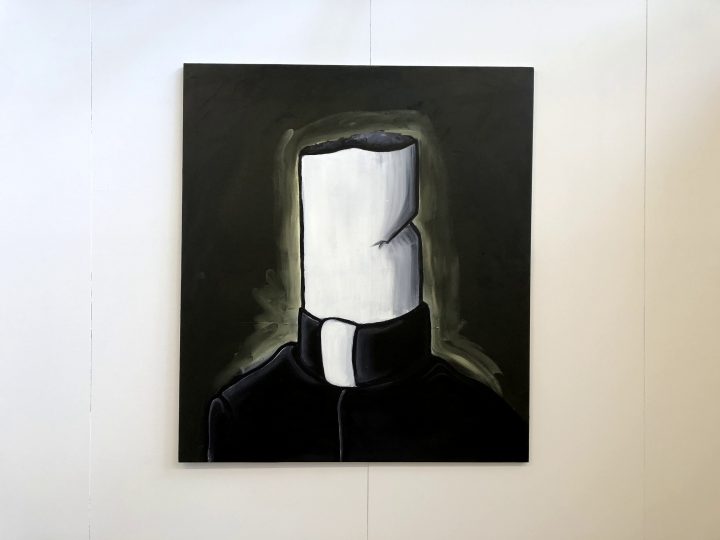
Photo credit: Arttenders
In his series of acrylic paintings Jur de Vries incorporates iconography of animation and comic books. They display a dark symbolism and therefore come with a certain feeling of threat. Familiar characters like Mickey Mouse are barely recognizable and are no longer innocent figures. We sense a bittersweet melancholy and a longing for better times.
11: Kaili Overwater | WDKA | Fine Arts | Autonomous practices
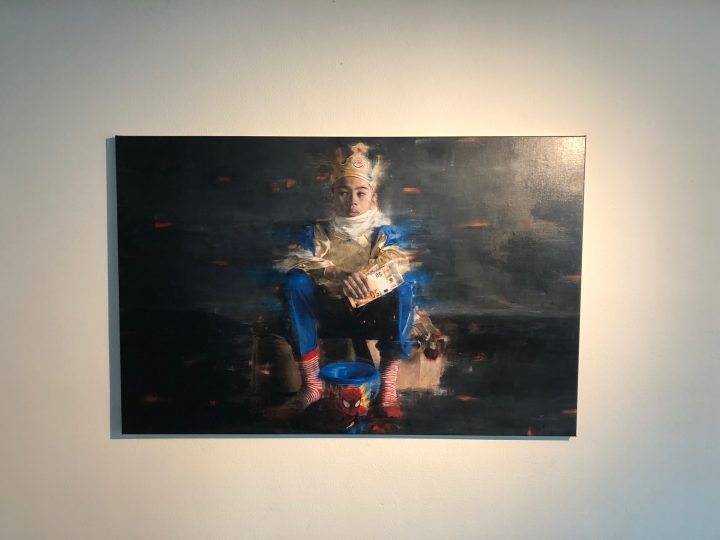
Photo credit: Arttenders

Photo credit: Arttenders
The monumental oil paintings by Kaili Overwater immediately caught our attention. Overwater captured contemporary culture, modern icons and globalization in historical imagery. The paintings remind us of the work of renowned portrait artist Kehinde Wiley, mainly because of the old master’s look. Through paintings and film, Kaili explores the subject of youth, street culture and criminality which results in slightly mysterious work. He references a fleeting disposable culture and touches upon the topic of our consumer society. His work displays good technique and the right atmosphere. We were very, very impressed!
12: Tim Dekkers | HKU| Design | Fashion Design
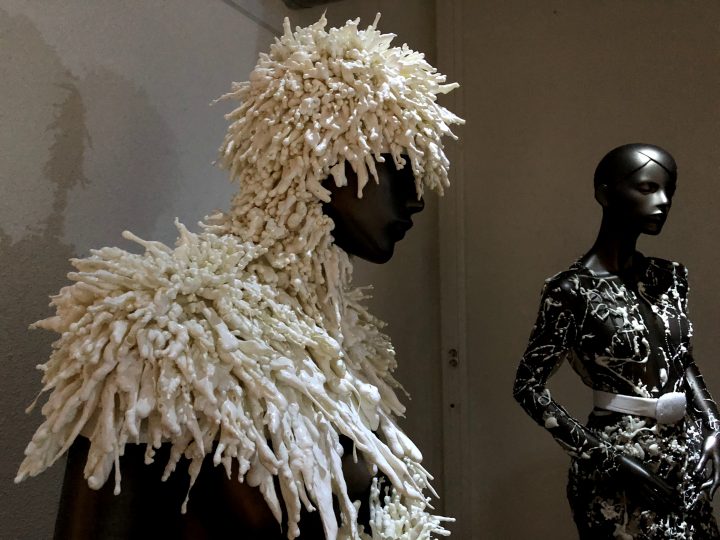
Photo credit: Arttenders
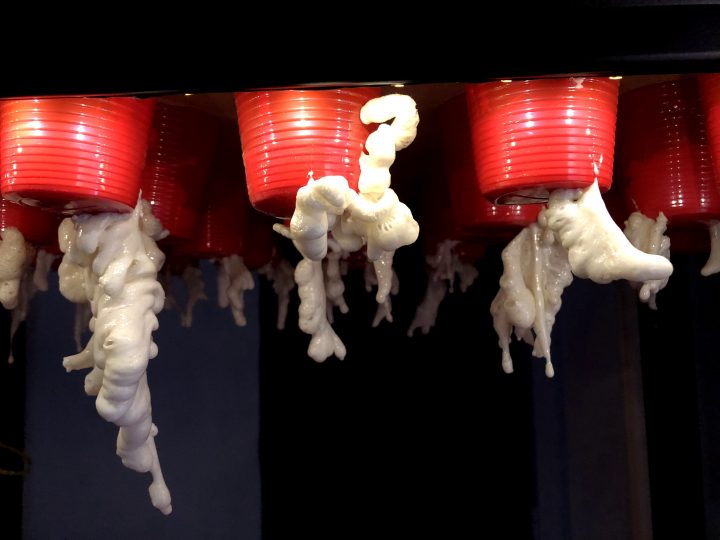
Photo credit: Arttenders
Tim Dekkers blurs the borders of fashion and art with The Parasitic Humanity. He presented his work in a dimly lit room that demonstrated the production process of his work. Therefore it looked like a laboratory for his creations. Through a chemical process Tim Dekkers brews artificial materials with an almost organic look, like crystals, corals and stalagmite forms. Dekkers ‘harvests’ these materials and lets them overgrow the garments of his models. This self-invented application of materials shows real talent for his profession. We invented the term costume brewer for this promising fashion designer. Iris van Herpen and Viktor & Rolf, better watch your back!

